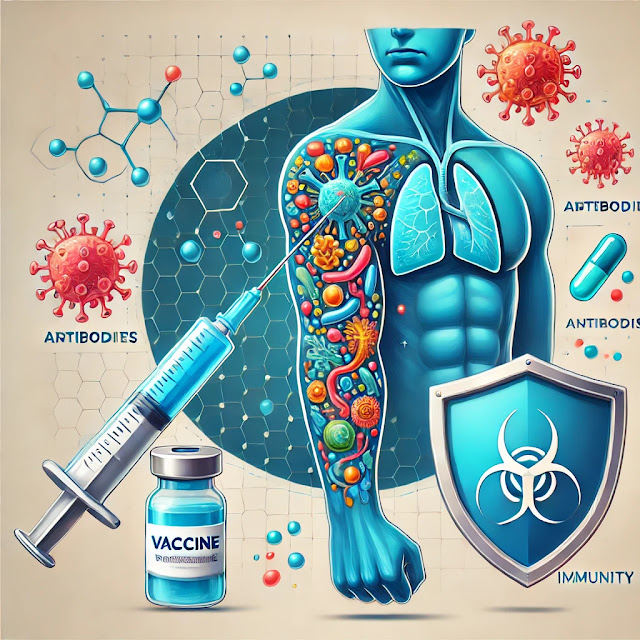Vaccines are one of the greatest achievements in medical science, saving millions of lives every year. But how do they work to protect us from diseases? Let’s explore the fascinating science behind vaccines and their vital role in safeguarding public health.
How Vaccines Work
Vaccines train your immune system to recognize and fight harmful pathogens like viruses or bacteria. Here’s how the process works:
Mimicking an Infection
Vaccines introduce a harmless part of a pathogen—such as a weakened or inactivated virus, a piece of its protein, or genetic material—into your body. This doesn’t cause illness but triggers an immune response.Stimulating Immune Response
- Antigen Recognition: Your immune system identifies the pathogen's harmless parts (antigens) as foreign invaders.
- Antibody Production: White blood cells called B-cells produce specific antibodies to neutralize the antigens.
- Memory Formation: Specialized immune cells, known as memory cells, “remember” the pathogen for future defense.
Future Protection
If you’re exposed to the actual pathogen in the future, your immune system quickly recognizes it and launches a strong, rapid defense, preventing illness or reducing its severity.
Types of Vaccines
Inactivated Vaccines
Contain killed or inactivated pathogens (e.g., polio vaccine).Live-Attenuated Vaccines
Contain weakened forms of the pathogen that can’t cause disease in healthy people (e.g., measles, mumps, and rubella vaccine).Subunit, Recombinant, or Protein-Based Vaccines
Use specific parts of the pathogen, like its protein, to trigger an immune response (e.g., HPV vaccine).mRNA Vaccines
Teach cells to produce a harmless protein from the pathogen, triggering an immune response (e.g., COVID-19 vaccines by Pfizer and Moderna).Toxoid Vaccines
Target toxins produced by the pathogen rather than the pathogen itself (e.g., tetanus vaccine).
Why Vaccines Are Important
Individual Protection
Vaccines protect you from serious illnesses, complications, and even death caused by infectious diseases.Herd Immunity
When a large portion of the population is vaccinated, it reduces the spread of diseases, protecting those who cannot be vaccinated, such as infants or people with weakened immune systems.Eradication of Diseases
Vaccination campaigns have eradicated diseases like smallpox and brought others, like polio, to the brink of elimination.
Common Myths About Vaccines
Vaccines Cause Disease
Vaccines use weakened or inactive forms of pathogens, so they cannot cause the diseases they aim to prevent.Vaccines Are Unsafe
Vaccines undergo rigorous testing and continuous monitoring to ensure their safety and efficacy.You Don’t Need Vaccines for Rare Diseases
Stopping vaccinations can lead to outbreaks of diseases that are currently rare, as seen with measles in some regions.
Fun Facts About Vaccines
- The first vaccine was developed in 1796 by Edward Jenner to protect against smallpox.
- Vaccines save an estimated 2–3 million lives every year worldwide.
- The word “vaccine” comes from the Latin word vacca, meaning cow, because Jenner’s first vaccine used cowpox material.
Why This Is Important
Understanding how vaccines protect us is crucial in combating misinformation and ensuring widespread immunization. Vaccines not only save lives but also play a pivotal role in the global fight against infectious diseases.
Conclusion
Vaccines are a marvel of medical science, equipping your body with the tools to defend itself against dangerous pathogens. By understanding how they work, we can appreciate their role in creating a healthier, safer world for everyone. So, the next time you roll up your sleeve for a vaccine, remember the incredible science behind this simple yet powerful act.
Would you like to explore more health topics or scientific breakthroughs? Let me know!




